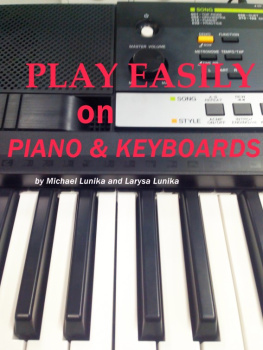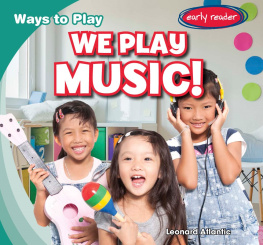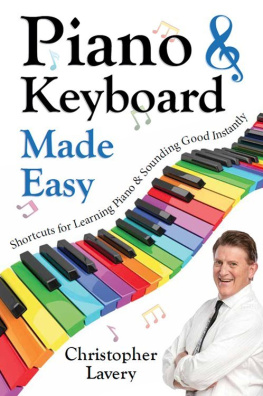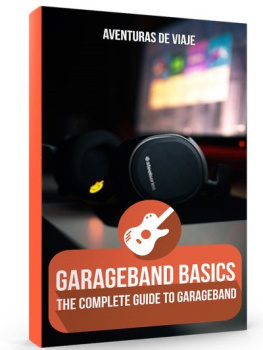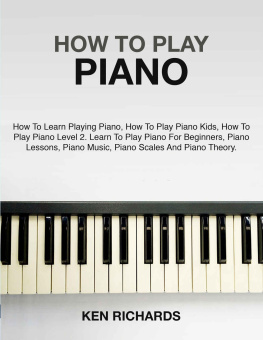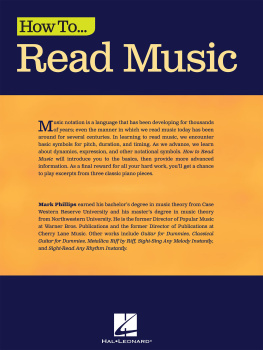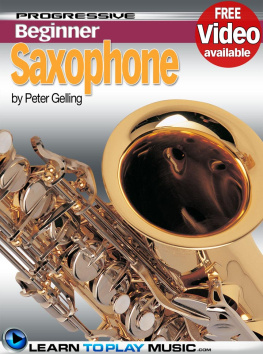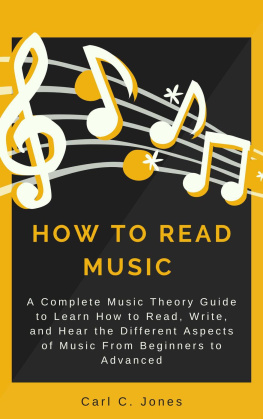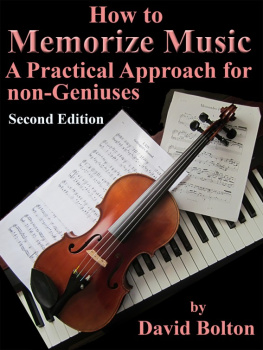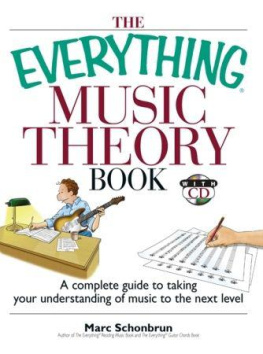No part of this publication maybe reproduced, stored in a retrieval system, or transmitted in anyform or by any means, electronic, mechanical, photocopying,recording, scanning, or otherwise without either the prior writtenpermission of the Authors.
LIMIT OF LIABILITY/DISCLAIMER OFWARRANTY: THE PUBLISHER AND THE AUTHOR MAKE NO REPRESENTATIONS ORWARRANTIES WITH RESPECT TO THE ACCURACY OR COMPLETENESS OF THECONTENTS OF THIS WORK AND SPECIFICALLY DISCLAIM ALL WARRANTIES,INCLUDING WITHOUT LIMITATION WARRANTIES OF FITNESS FOR A PARTICULARPURPOSE. NO WARRANTY MAY BE CREATED OR EXTENDED BY SALES ORPROMOTIONAL MATERIALS. THE ADVICE AND STRATEGIES CONTAINED HEREINMAY NOT BE SUITABLE FOR EVERY SITUATION. THIS WORK IS SOLD WITH THEUNDERSTANDING THAT THE PUBLISHER IS NOT ENGAGED IN RENDERING LEGAL,ACCOUNTING, OR OTHER PROFESSIONAL SERVICES. IF PROFESSIONALASSISTANCE IS REQUIRED, THE SERVICES OF A COMPETENT PROFESSIONALPERSON SHOULD BE SOUGHT. NEITHER THE PUBLISHER NOR THE AUTHOR SHALLBE LIABLE FOR DAMAGES ARISING HERE FROM. THE FACT THAT ANORGANIZATION OR WEBSITE IS REFERRED TO IN THIS WORK AS A CITATIONAND/OR A POTENTIAL SOURCE OF FURTHER INFORMATION DOES NOT MEAN THATTHE AUTHOR OR THE PUBLISHER ENDORSES THE INFORMATION THEORGANIZATION OR WEBSITE MAY PROVIDE OR RECOMMENDATIONS IT MAY MAKE.FURTHER, READERS SHOULD BE AWARE THAT INTERNET WEBSITES LISTED INTHIS WORK MAY HAVE CHANGED OR DISAPPEARED BETWEEN WHEN THIS WORKWAS WRITTEN AND WHEN IT IS READ.
Play Easily on Pianoand Keyboards
Copyright 2016 Michael Lunika
Published by Michael Lunika
Table of Contents
Introduction
Every year few millions of Americans start to study music.After one year 80% of them stop this studying. They are not talented enough? However, what theyare studying for a whole year long? All music theory can bedelivered for 30 minutes (even less). Of course not everyone canremember it at once. These pupils do not read the books on music?There are so many books on music theory
As a lot of people we studied music at schools. Didsomeone catch enough to play? We cant say yes on thisquestion. Afterwards we learn to playusing different books and manuals . These papers promised many good thingsbut that was sort of suffering to learn to play. By trial and errorwe have figured out quite enough information which can eliminatethis suffering. So we decided to write a book if we could read onewe would not get through difficulties for many years long.
In this book we tried toexplain the origin and fundamental properties of music. We named this as anatomy of music because we tried to divein the depth of it. We delever it in historical and logicsuccession demonstrating it on examples for playing piano andkeyboards.
W e delivered music theory quitecompletely trying to eliminate confusive moments.
About This Book
PlayEas ily on Piano and Keyboards, deliversneeded information to play any song you just have heard and evenmore. You will be able to play without notes because youllunderstand the anatomy of music. You will be able to write themyourself. By the way you'll get system knowledge of music. Thisbook contains no junk and confusions. Read this book and youllgain the skill to play piano and keyboard (and not only)professionally in a short period.
Part 1: About MusicTheory
Chapter 1 : Anatomy of Music
In ThisChapter :
The origin of music
Some physical aspects of music
Tones and medieval music
Why are there so many pitchesand only few tones
When did music start?
All depends on what kind ofsounds someone would call the music. We think the music startedwhen someone understood that the two strings one of which is twiceas much have the same voice (tone) if they are equally tensioned.To get new tones (voices} Pythagoras divided the difference ofthese two strings in 12 parts knowing that it gives 12 differentvoices. He could divide it in some other way for instance in 13times. But the number 12 was magic at that time. So he did as hedid and now we have European music. In someregions of China it is divided in 13th and they have Chinesemusic.
Nowadaysthis is known (but not for all) that ifsounds have frequencies which are in 2, 4, 8. times more orless, all these sounds have the same voice or tone. Such strings sound as if they say the same.Later youllfind the proof of it when well teach you to play Happybirthday.
These 12 different tones (solovoices) constitute an octave. As the range of sounds spreads from16 Hz up to 20000Hz there are lots of pitches and can be 11octaves. But every octave consists of the same 12 tones (lower orhigher).
What is the pitch
Pitch is the quality of a soundgoverned by the rate of vibrations producing it; the degree ofhighness or lowness of a tone. The main characteristic of pitch isthe frequency of vibration which can switch from 16 Hz to 20000 Hz.But why are there so many pitches and only few (twelve) tones?
Why are there so many pitchesand only few tones
Its very well establishedphenomena in physics. The sound is produced by mechanical vibrationwhich is propagated through the air. The ideal vibration does notexist in nature. Even the string vibrates not as sinus. (Idealvibration must write the sinus curve). It has distortions whichphysically turn to be presented as the harmonics i. e. thevibrations with frequencies of 2, 4, 8... times higher or lower ofthe frequency of main vibration. So if the string vibrates with thefrequency saying 440 Hz there are the vibrations with thefrequencies.....55 Hz; 110Hz; 220 Hz; 440 Hz; 880 Hz; 1760 Hz.....The intensity of vibration with the frequency 440 Hz is most high.The vibrations with the frequencies.....55 Hz; 110Hz; 220 Hz; 880Hz; 1760 Hz... are called harmonics. The intensities of harmonicsare lower. If the string vibrates with the main frequency saying220 Hz there are the vibrations with the frequencies .....55 Hz;110Hz; 220 Hz; 440 Hz; 880 Hz; 1760 Hz..... The intensity ofvibration with the frequency 220 Hz is most high. The vibrationwith the frequencies .....55 Hz; 110Hz; 440 Hz; 880 Hz; 1760 Hz...are harmonics. The intensities of harmonics are lower. But in bothcases the set of vibrations are the same. Thats why the stringswhich vibrate with frequencies 2, 4, 8, .... times more or lesshave the same tone (voice). Thats because the set of harmonicsdetermines the voice. So if you see lots of keys on keyboard dontbe scared. There are only twelve tones (solo voices). These 12tones (solo or simple voices) are presented in any musicalinstrument and the set of 12 solo voices is called an octave. Allrange of keys presents the range of simple sounds (voices) whichfrequencies are increasing in the twelfth degree root of two. Sothe octave will be formed when any 12 keys were taken in order. Thethirteenth key will have the frequency twice as much comparativelywith the frequency of first key of the set and will have the sametone (voice). Thats why every thirteenth keyhave the same name.
Names of tones and medieval music
This is hardto discuss w hat kind of music was in theancient period. There were no recorder at that time. But inmedieval times it was monophonic (sometimes it was written on apaper using notes). It means that medieval music consisted ofsimple voices (tones). But in the ancient time it was noticed thatonly seven tones from 12 make harmony. Afterwards the succession ofseven tones (notes) was named a scale. Thats why there are onlyseven letters A, B, C, D, E, F and G used to name the simple voices(tones). Later these keys were made white and bigger on piano.Others five keys were made black. To designate five other voicesthe special signs were used. (sharp) andb (flat). Thats turned to be very useful because if to look at thekeyboard this is easy to watch the octaves and this is easy toremember where the certain simple voice (tone) is. At first glanceyou see two and three black keys separated with two white keys. Inthis case the octave starts from C which is left from first blackkey and finishes B ( C, D, E, F, G, A, B). Then again it will be Cof the next octave. Keyboards or pianos have few octaves. (~ 5 or7). The range of sounds which ear can hear is from 16 Hz to 20000Hz. So piano has lots of strings which one is tensioned to producethe some certain pitch.
Next page
